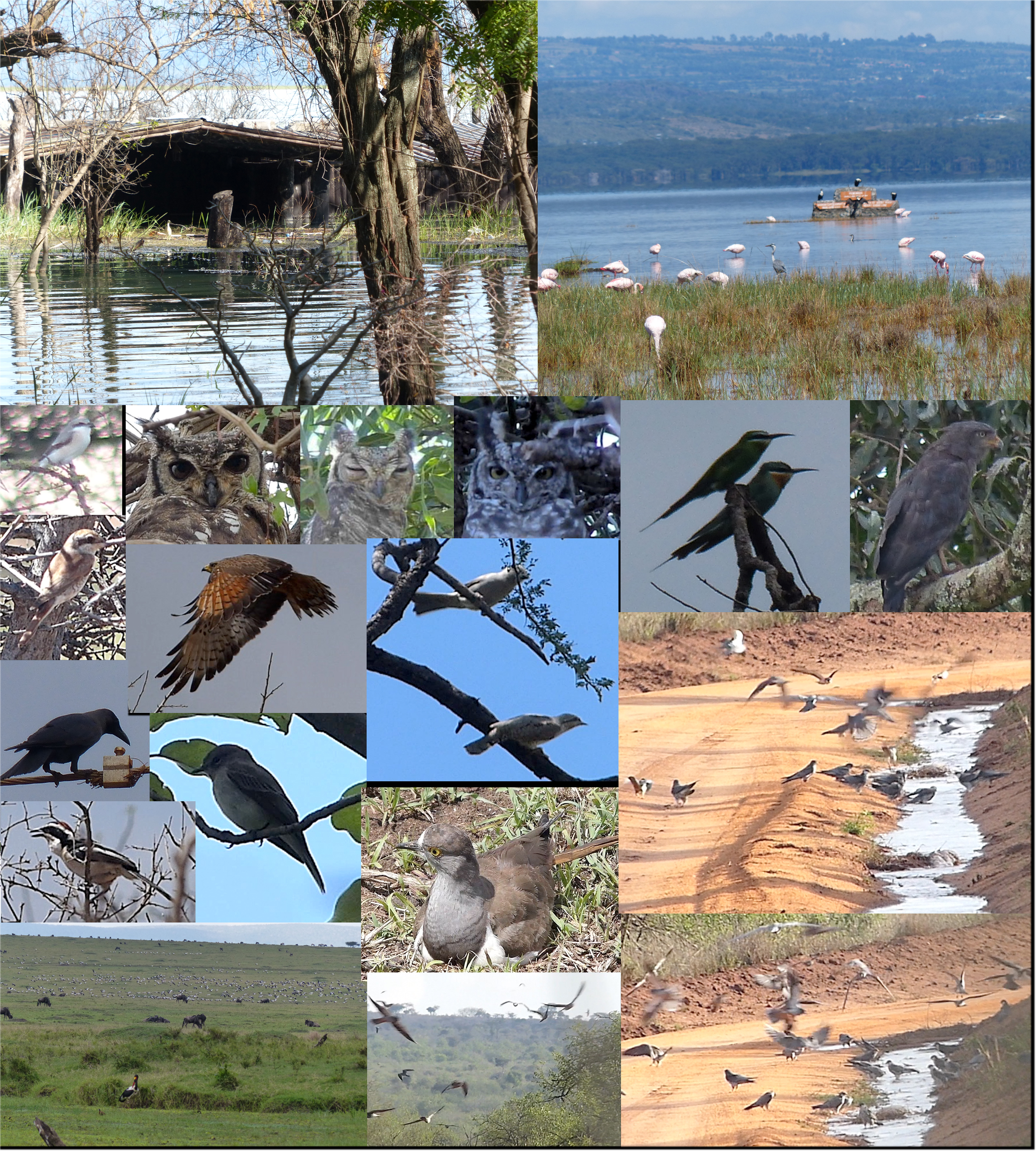From: Brian Finch <birdfinch@gmail.com>
Date: 2013-11-28 03:08
Subject: INTERESTING IMAGES FROM THE WINGS NOVEMBER TOUR
Dear All,
Sorry this is in bits and pieces, but will send a report on the recent
trip soon, in the meantime....
INTERESTING IMAGES FROM THE WINGS NOVEMBER TOUR
TOP LEFT
A view of Lake Baringo Club. This is a view from the front parking
looking into the reception area!
TOP RIGHT
Southern end of Lake Nakuru. The sign on the submerged road is still
showing, so you know where you are. The Park has very restricted
access now, but is still an incredible place. Muddy margins are
appearing on the east shore, so it might be going down.
ALL SECOND ROW LEFT
FAR RIGHT
This is an adult Lesser Grey Shrike in non breeding plumage at Buffalo
Springs. Not a plumage we see much of in Kenya.
SECOND FROM LEFT
A Greyish Eagle-Owl near Buffalo Springs airstrip. Whilst the eyes are
black, there seems to be a hint of yellow, but this might be the
reflection from the foliage rather than pigment in the eye.
THIRD FROM LEFT
A Greyish Eagle-Owl from Baringo for comparison.
FOURTH FROM LEFT
A Spotted Eagle-Owl from Tsavo West. Greyish seem to be fairly
consistently finely barred below, whilst Spotted tend to blotchiness.
ALL THIRD ROW LEFT
FAR LEFT
This Shrike at Buffalo Springs is showing features of Red-backed and
Red-tailed, with warm reddish back, and heavy flank barring of
Red-backed, yet the tail is all warm reddish.
SECOND FROM LEFT
An immature Grasshopper Buzzard taking flight near Ngulia in Tsavo West.
THIRD FROM LEFT
This was the only migrant seen in the bottom of the Kerio Valley, This
Eurasian Wryneck was a great find, and shows how small it is when
compared to the size of the Parrot-billed Sparrow above it.
Interestingly Parrot-bills are in the valley, whilst Grey-headed are
common in Kabarnet.
ALL FOURTH ROW LEFT
FAR LEFT
The now infamous House Crow at Makindu checking out a hopefully
dangerous electrical connection.
SECOND FROM LEFT
One of a couple of Gambaga Flycatchers in Kerio valley. I am sure that
these birds are not migrants here but present all year, as I seem to
find them at any time. This bird might be an immature as it has some
pale edgings to the wing coverts.
THIRD FROM LEFT
This Senegal Plover was incubating three eggs on burnt ground not far
from the south Mara bridge. There are not many breeding records for
this species in Kenya.
FIFTH ROW FAR LEFT
After the recent rains the secretive Red-naped Bush-Shrikes are
calling quite vigorously just past Ngulia Airstrip.
BOTTOM LEFT
At Musiara, this is part of a group of about 3000 White Storks which
made a sudden appearance.
SECOND ROW FAR RIGHT
This adult Western Banded Snake-Eagle was a surprise find alongside a
forest track in Imenti Forest on Mt Kenya. Has anyone ever seen this
species in this area before, my closest personal records come from
Meru NP.
SECOND ROW SECOND FROM RIGHT
In all the time I lived in the Mara, I cannot remember seeing either
Blue-cheeked or Madagascar Bee-eaters there, and yet the habitat looks
ideal. Here by Musiara Swamp was a group of seven bee-eaters, five
Madagascar and two Blue-cheeked. What were Madagascar Bee-eaters doing
this far west at the end of November? Are Blue-cheeks really so much
smaller than Madagascar?
BOTTOM MIDDLE
Whilst mesmerised by the sudden invasion of a conservative 15000 Amur
Falcons which completely surrounded our vehicle, this was a view from
outside the window.
FOURTH ROW RIGHT AND BOTTOM RIGHT
As we sat in the car flock after flock of Amur Falcons came to drink
in the rain-water pools on the road in front of us. I did not know
that falcons did drink, I cannot ever recall seeing any species
drinking before.

